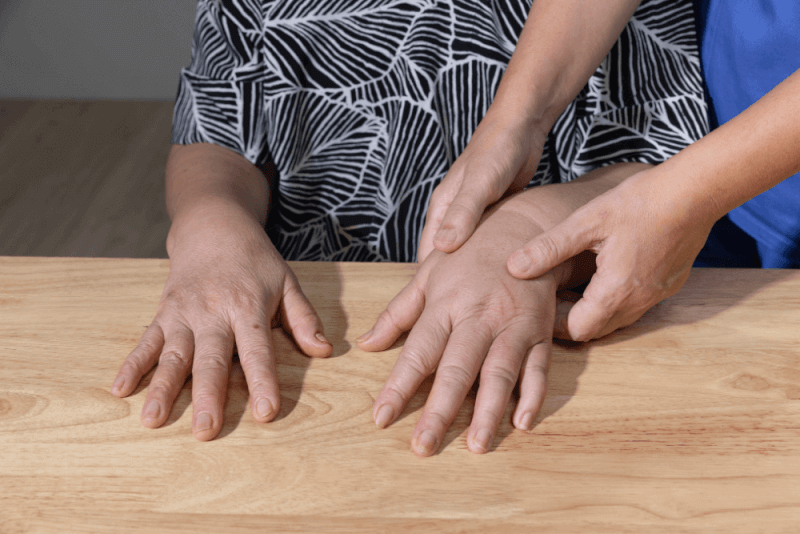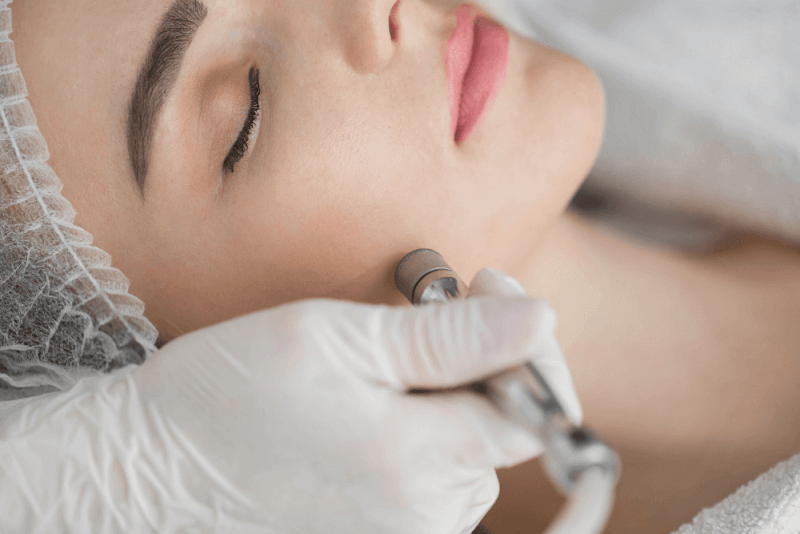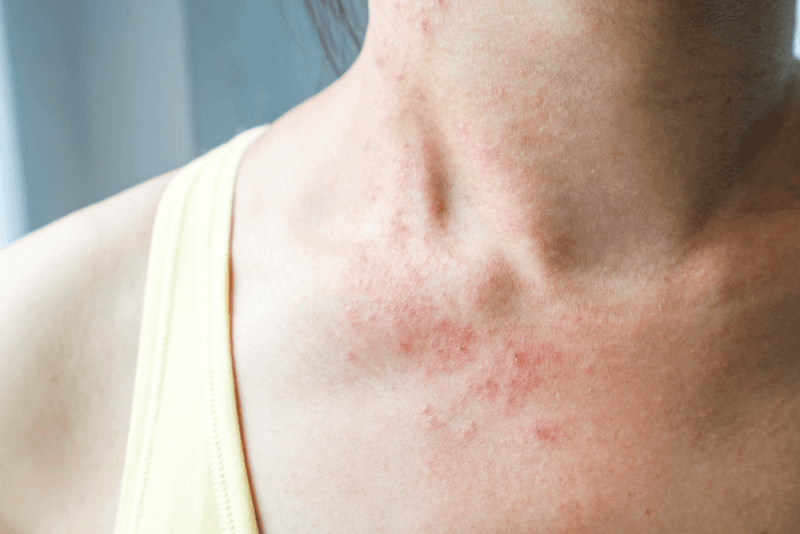What is Excessive Sweating (Hyperhidrosis)?
Sweat is an odorless fluid secreted from sweat glands, also known as eccrine glands. The function of sweat is to help regulate body temperature and prevent overheating. Eccrine glands are located in various areas of the skin. There are channels that allow sweat to reach the surface of the skin.
As sweat evaporates from the skin, it cools the body. Hyperhidrosis is the term used for excessive sweating. This condition occurs when sweating exceeds the amount needed to regulate body temperature, such as sweating during rest or in cold weather.
Types of Hyperhidrosis
Hyperhidrosis is divided into two subtypes.
Primary Focal Hyperhidrosis
Primary focal hyperhidrosis is a chronic skin condition caused by genetic changes, and it is therefore inherited from biological family members. The most common type of hyperhidrosis, primary focal hyperhidrosis, typically affects the underarms, hands, feet, and face. The first symptoms usually appear before the age of 25.
Secondary Generalized Hyperhidrosis
Also known as generalized hyperhidrosis, this type is caused by an underlying medical condition or as a side effect of medications. Examples of potential causes include diabetes, Parkinson's disease, and medications like naproxen. Generalized hyperhidrosis can also cause night sweats.
Diagnosis of Excessive Sweating (Hyperhidrosis)
To diagnose excessive sweating, a physical examination of the patient is necessary. The symptoms observed in the patient are evaluated using diagnostic criteria. If the patient has experienced excessive sweating for at least six months and answers "yes" to at least two of the following questions, hyperhidrosis is diagnosed:
- Is sweating occurring in the underarms, palms, soles of the feet, or face?
- Is the patient under 25 years old?
- Is sweating occurring on both sides of the body in the same way?
- Does sweating affect the ability to perform certain activities?
- Is there little to no sweating at night?
- Is there a history of hyperhidrosis in the biological family?
- Does the sweating episode last for at least one week?
Several tests are also used to diagnose hyperhidrosis. These include:
- The starch-iodine test: Iodine solution is applied to the sweaty area, followed by starch powder. The solution turns dark blue in areas of excessive sweating.
- Paper test: A special paper is placed on the affected area to absorb sweat, and then weighed to determine the amount of sweat produced.
- Blood or imaging tests: These may be used to identify underlying causes of the symptoms.
Causes of Excessive Sweating (Hyperhidrosis)
Overactive sweat glands cause hyperhidrosis. Research is ongoing to better understand why these glands produce excessive sweat, but certain triggers are known to contribute to hyperhidrosis. These triggers include:
- Emotional responses such as stress, fear, or nervousness
- Heat or humidity
- Exercise or physical activity
- Spicy foods, fatty foods, sugary and salty foods, high-protein foods, as well as caffeine and alcohol consumption
Medications That Cause Sweating
The following groups of medications can increase sweating:
- Albuterol
- Bupropion
- Hydrocodone
- Insulin
- Lisinopril
- Levothyroxine
- Naproxen
- Omeprazole
- Sertraline
Medical Conditions That Cause Sweating
Generalized hyperhidrosis can be a medical sign of the following health conditions:
- Acromegaly
- Infections like tuberculosis
- Anxiety disorder
- Cancer
- Diabetes
- Parkinson's disease
- Obesity
- Menopause
- Hyperthyroidism
- Heart disease or heart failure
Symptoms of Excessive Sweating (Hyperhidrosis)
The characteristic symptom of hyperhidrosis is excessive sweating. However, over time, other symptoms may also occur, including:
- Irritation of the skin leading to itching and inflammation
- The mixture of sweat with skin bacteria causing body odor
- Cracked skin on the feet
- Peeling of the skin on the feet
The most commonly affected areas of hyperhidrosis include:
- Underarms
- Soles of the feet
- Palms
- Forehead and cheeks
- Genitals
- Lower back
Treatment Methods for Excessive Sweating (Hyperhidrosis)
Excessive sweating can be treated in different ways depending on the affected area and the severity of the sweating. Some home remedies to reduce the symptoms of excessive sweating include:
- Using antiperspirants: Antiperspirants block sweat glands, stopping the body from producing sweat. Some OTC or prescription varieties may be recommended. Aluminum-based products are best for controlling hyperhidrosis.
- Taking more frequent showers to improve mild symptoms.
- Wearing breathable and absorbent clothing like cotton can help patients feel more comfortable. Avoid fabrics like polyester, which trap heat.
Medication Therapy
Certain medications can be used to reduce the symptoms of excessive sweating, including:
- Anticholinergic agents
- Antidepressants
- Beta blockers
- Aluminum chloride gel
Iontophoresis
This method is used to prevent sweating in the hands and feet. First, the hands and feet are submerged in a tub filled with tap water.
A special device then emits an electrical current into the water to gradually block the sweat glands. Each treatment lasts 10 to 20 minutes, and repeated treatments may be necessary. Therefore, there is equipment available for performing the therapy at home.
Botox
Injecting botulinum toxin into an overactive nerve can stop sweat production for months. This treatment needs to be repeated over time.
Microwave Therapy
In this therapy, a high-tech device is placed on the affected area. The device emits thermal energy that permanently destroys the sweat glands. The procedure typically takes about an hour.
Surgery for Excessive Sweating
If other methods are unsuccessful, surgical procedures may be considered. Two different methods are used to prevent excessive sweating.
ETS Method
In endoscopic thoracic sympathectomy (ETS) operations, the surgeon cuts a nerve in the body to stop the signal telling the glands to produce sweat. It is a minimally invasive type of surgery.
Removal of Sweat Glands
In another method, the sweat glands are removed using laser, scraping, cutting, or liposuction.
Side Effects of Surgery for Excessive Sweating
The side effects of surgery for excessive sweating include:
- Skin irritation, cracking, or blistering
- Changes in skin color
- Pain or discomfort
- Discoloration or damage to clothing
- Scarring
What is Night Sweating (Hyperhidrosis)?
Night hyperhidrosis is the term used when excessive sweating occurs at night, even when the temperature is not hot. There are many different causes of night sweats, most of which are not serious. However, in some cases, night sweats can be a sign of a medical condition.
Causes of Night Sweating (Hyperhidrosis)
The most common causes of night sweats are related to hormonal changes in women. Other causes include:
- Anxiety and stress
- Sleep disorders such as sleep apnea
- Infections such as the flu and tuberculosis
- Certain types of cancer, such as non-Hodgkin lymphoma or leukemia
- Stroke
- Thyroid disease
Night sweating can also be caused by certain medications. These groups of medications include:
- Paracetamol
- Antidepressants
- Diabetes medications
- Medications used in the treatment of high blood pressure
- Steroid medications
- Certain cancer treatments
- Methadone
Excessive Sweating in Babies
Babies may sweat a lot during their deepest phase of sleep, known as REM sleep. This is because the REM sleep phase lasts longer in babies than in adults or children.
Excessive sweating during sleep in babies is usually due to overheating. Therefore, it is important to pay attention to the thickness of blankets and pajamas used. Possible causes of excessive sweating in babies include:
- Intense crying
- High fever
- Congenital heart conditions
Excessive Sweating in Pregnant Women
During pregnancy, increased hormone levels and blood flow cause a rise in body temperature. To balance body temperature, more sweat is produced.
In some women, sweating may continue after childbirth. This is not a cause for concern, as excessive sweating may persist due to the need to eliminate excess fluids and the rebalancing of hormone levels.
Excessive Sweating in Children
Unlike older children and adolescents, excessive sweating is not common in young children, and in some cases, it may indicate an underlying health issue.
Possible causes of excessive sweating in young children include:
- Infections
- Hyperthyroidism
- Diabetes
- High blood pressure
- Congenital heart conditions
- Cardiac arrhythmia
- Certain prescription medications
- Metabolic and hormonal disorders








